Monitoring the Health Status of Mice with Bleomycin-induced Lung Injury by Using Body Condition Scoring
- PMID: 30808435
- PMCID: PMC6464078
- DOI: 10.30802/AALAS-CM-18-000060
Monitoring the Health Status of Mice with Bleomycin-induced Lung Injury by Using Body Condition Scoring
Abstract
Well-defined, humane endpoints aid in monitoring animal health status during disease development. Body condition scoring (BCS) is a method for assessing health status in mouse studies where wasting and death are potential endpoints. Whether BCS is useful in monitoring animals with bleomycin-induced lung injury has not been reported. Body weight (BW) is a common humane endpoint for this model, but because the lungs increase in weight as BW decreases, the animal's true physical condition could be masked when using BW as the sole endpoint criterion. Therefore, our goal here was to assess the usefulness of BCS in monitoring health status in a mouse model of lung injury. Lung injury was caused by acute instil- lation of the fibrogenic antibiotic bleomycin into the lungs through the trachea. Male C57BL/6 mice received bleomycin (0.075 U) dissolved in saline or saline alone. Bleomycin instillation led to a doubling of lung weight and decreases in both BW and BCS, compared with saline instillation. The changes in BW and BCS were significantly correlated with lung weight. When the adjusted BW was used (corrected for the increase in lung weight), the correlation was unchanged, suggesting that the increase in lung weight did not significantly mask the decrease in BW. Bleomycin instillation caused decreases in both soleus and visceral epididymal fat masses. The change in BCS was significantly correlated with both soleus and VEF mass, suggesting that BCS is reflective of the systemic loss of muscle and fat mass. Our findings suggest that BW and BCS are significantly correlated to lung injury in the bleomycin model of lung fibrosis and that BCS is an appropriate alternative humane endpoint in this mouse model.
Figures
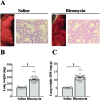
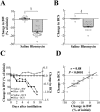
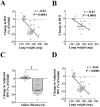
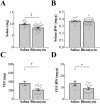

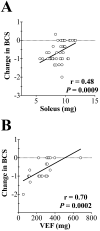
References
-
- Easterly ME, Foltz CJ, Paulus MJ. 2001. Body condition scoring: comparing newly trained scorers and microcomputed tomography imaging. Lab Anim (NY) 30:46–49. - PubMed

